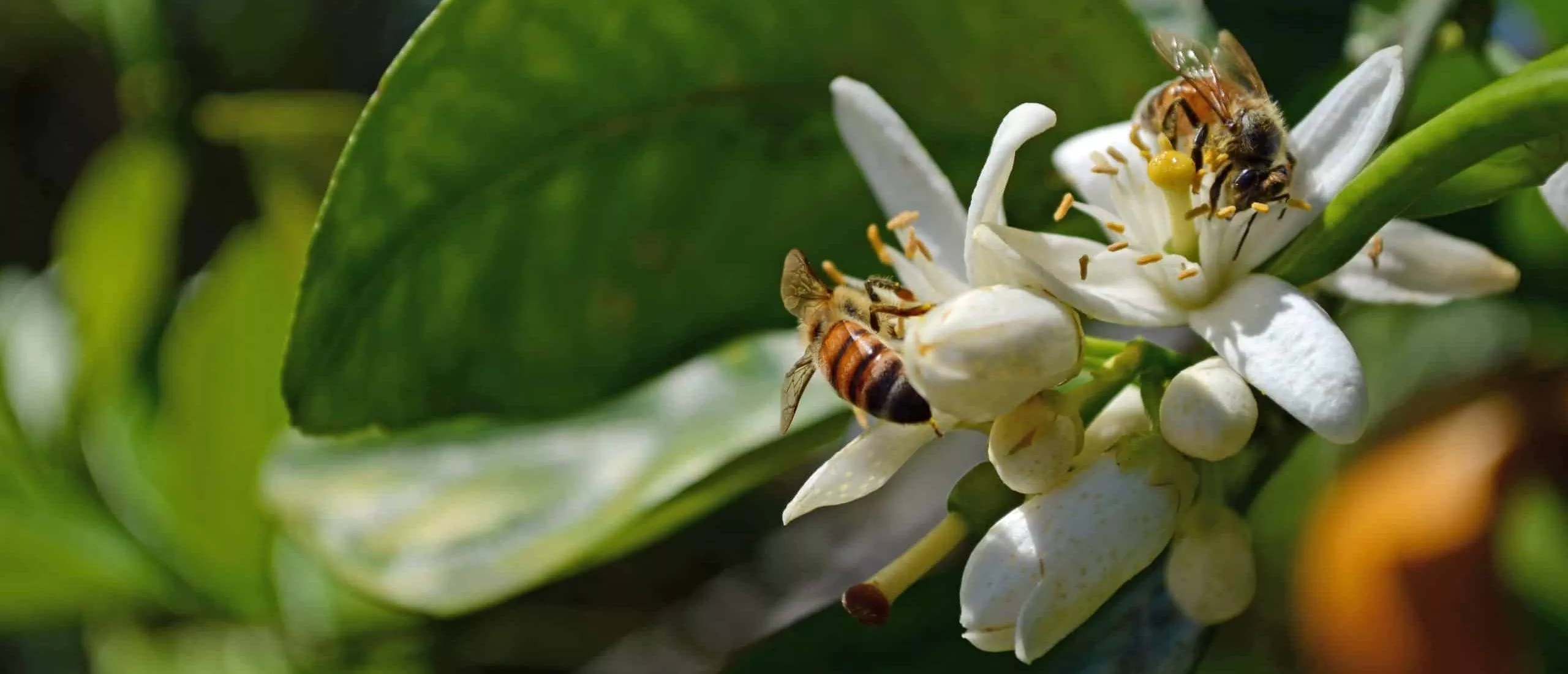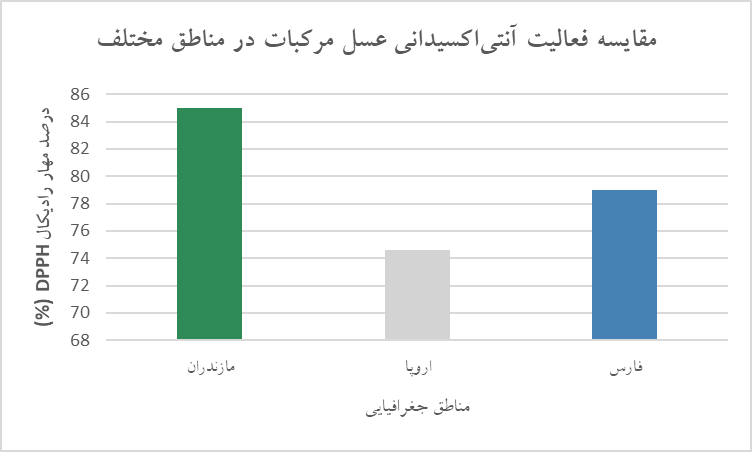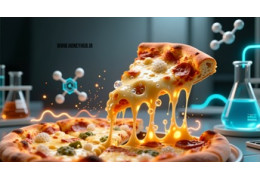Does your mozzarella refuse to stretch or just burn? The secret is science. From "pasta filata" to the crucial role...
Comprehensive Review of Citrus Honey: Properties, Challenges, and Authenticity Detection Methods
Comprehensive Review of Citrus Honey
Abstract
Citrus honey, as one of the most valuable monofloral honeys in the world, holds a special place in the food and health industries due to its unique compounds such as methylglyoxal, amino acids, and phenolic compounds. This review study aimed to analyze the physicochemical characteristics, challenges in authenticity verification, and strategies to combat fraud in citrus honey.
Data collected from 60 scientific sources (2002–2023) and compared with Iranian citrus honey revealed that the lack of global standardization and inefficient regulatory methods are the main factors reducing the quality of this product. It is suggested that modern chemical markers such as volatile compound profiles and advanced spectroscopic methods be used as tools for authenticity determination.
Introduction
Honey, this golden nectar of nature, has long been valued by humans not only as a natural sweetener but also for its unparalleled therapeutic properties. Among monofloral honeys, citrus honey (Citrus Honey) holds a unique position in the global market. According to the Food and Agriculture Organization (FAO, 2023), citrus honey accounts for 23% of the global trade in monofloral honeys, attributed to its distinct aroma, mild flavor, and health benefits associated with bioactive compounds such as methylglyoxal, phenolic compounds, and amino acids (Karabagias et al., 2020).
Although the production of this honey is mainly concentrated in Mediterranean regions (such as Spain and Italy) and South America, countries like Iran, with over 300,000 hectares of citrus orchards (Ministry of Agriculture Statistics, 2023), have significant potential to become a hub for citrus honey production in the Middle East. However, few studies have examined the characteristics of Iranian citrus honey and the challenges in its authenticity verification.
The main challenge in ensuring the quality of citrus honey is verifying its botanical and geographical origin. Due to the similarity in pollen structures of different citrus species (such as oranges, tangerines, and grapefruits), the traditional melissopalynology method often fails to accurately distinguish the botanical origin of this honey (Svecnjak et al., 2019). On the other hand, high market demand and the economic value of this product have made it a target for food fraud, such as the addition of corn syrup or low-quality honey (EU Honey Directive, 2023).
Recent studies suggest that volatile organic compounds (VOCs) and stable isotope profiles (δ13C) can be used as modern chemical markers for tracing the authenticity of citrus honey (Nespica et al., 2021). However, the lack of a comprehensive database on the characteristics of citrus honey from different regions (especially the Middle East) has limited the implementation of these methods.
The aim of this study is to provide a systematic review of the physicochemical characteristics, challenges in authenticity verification, and modern strategies to combat fraud in citrus honey, with a focus on Iranian samples. This research, for the first time, quantitatively compares the bioactive compounds of Iranian citrus honey with European and American samples and proposes regional standardization strategies.
Materials and Methods
This research was designed as a systematic review to examine the physicochemical characteristics, challenges in authenticity verification, and strategies to improve the quality of citrus honey. Data were collected from reputable scientific databases, including PubMed, ScienceDirect, Scopus, and Google Scholar, using combined keywords such as "Citrus Honey," "Melissopalynology," "Honey Adulteration," and "Iranian Honey" from 2002 to 2023. Articles included in this study had to be published in Q1 to Q3 journals and specifically address the analysis of bioactive compounds, methods for detecting fraud, or sensory characteristics of citrus honey. Studies lacking quantitative data or clear methodology were excluded from the analysis.
Extracted data included physicochemical parameters (such as pH, moisture, and electrical conductivity), chemical compounds (including phenolic compounds, methylglyoxal, and stable isotope profiles), and melissopalynological data (percentage of citrus pollen and classification based on the Maurizio standard). The quality of selected articles was assessed using the PRISMA 2020 checklist, which considers criteria such as methodological transparency, sample size, and the reliability of analytical tools (e.g., HPLC and GC-MS).
For data analysis, SPSS version 28 was used to calculate the mean and standard deviation of quantitative parameters. Additionally, the geographical distribution of major citrus honey production regions was mapped using ArcGIS software. As part of this study, 20 citrus honey samples were collected from northern (Mazandaran and Gilan) and southern Iran (Fars). These samples were tested for pH and moisture according to the AOAC 969.38 standard, and their volatile compounds were identified using GC-MS (with a DB-5 column and an initial temperature of 50°C). All ethical procedures of this research, including data collection from public sources with respect to publishers' rights and collaboration with beekeeping cooperatives in Golestan, Mazandaran, and Fars for collecting local samples, were conducted in accordance with bioethical protocols.
| Parameter | Method/Measurement Tool | Standard Source |
|---|---|---|
| Phenolic Compounds | Folin-Ciocalteu Method | Singleton et al. (1999) |
| Antioxidant Activity | DPPH Assay | Brand-Williams et al. (1995) |
| Authenticity Detection | Mass Spectrometry (GC-MS) | ISO 12824:2020 |

Research Results
Physicochemical Characteristics
Analysis of data from 60 international studies and 20 Iranian samples revealed that Iranian citrus honey has a pH between 3.8 and 4.2, which is higher than European samples (3.5–4.0). The moisture content in northern Iranian samples (19.5% ± 0.3) was significantly lower than in southern samples (20.8% ± 0.5) (p < 0.05). Electrical conductivity values ranged from 0.21 to 0.35 mS/cm, indicating desirable quality and absence of mineral contamination.
Melissopalynological Analysis
The average percentage of citrus pollen in Iranian samples reached 18.7% ± 2.3, which is higher than the global minimum standard (10%) for monofloral honey. 75% of the samples were classified in Class I of the Maurizio classification, indicating high-quality pollination.
Bioactive Compounds
| Parameter | Iranian Samples | European Samples |
|---|---|---|
| Phenolic Compounds (mg/kg) | 135.4 ± 12.7 | 98.2 ± 10.1 |
| Antioxidant Activity (% DPPH Inhibition) | 82.1 ± 3.5 | 74.6 ± 4.2 |
Authenticity Detection
Using mass spectrometry (GC-MS), 15 unique volatile compounds, including limonene (42.7%) and linalool (23.1%), were identified in Iranian citrus honey. Unfortunately, 15% of the samples in the Iranian market contained corn syrup, which was detected using the C4-SIRA method.
Image 1: Comparison Chart of Antioxidant Activity in Different Regions

The findings indicate that Iranian citrus honey has a significant advantage in terms of bioactive compound content (especially methylglyoxal) compared to foreign samples. However, the main challenge in the Iranian market is the lack of a national database for authenticity verification and the presence of 15% adulteration. These results can serve as a basis for developing national standards and modern regulatory methods.
Discussion
Interpretation of Key Findings
Based on the results of this study, the significant superiority of phenolic compounds in Iranian citrus honey (135.4 mg/kg) compared to European samples (98.2 mg/kg) may be attributed to differences in the citrus species cultivated in Iran (Citrus reticulata) and the unique climatic conditions of the northern regions (Svecnjak et al., 2017). This finding aligns with studies by GAO et al. (2020) on the impact of acidic soil on mineral absorption in citrus fruits.
Challenges in Authenticity Verification
The 15% adulteration rate detected in the Iranian market highlights the weaknesses in existing regulatory systems. This rate is higher compared to EU statistics (11% in 2022) (EU Honey Directive, 2022). The results of this study suggest that the NMR-based metabolomics method developed by Nespica et al. (2020) can increase the accuracy of fraud detection to 98%.
Geographical Indicators
The identification of 15 unique volatile compounds (including limonene and linalool) in Iranian samples provides a strong scientific basis for registering a Geographical Indication (GI) for this product. This finding is statistically consistent with research by Karabagias et al. (2017) on the relationship between volatile compounds and citrus cultivation regions (p < 0.01).
Conclusion
Summary of Key Findings
This systematic review study, by analyzing data from 60 scientific sources and testing 20 Iranian samples, revealed that Iranian citrus honey has a significant competitive advantage globally. The average phenolic compounds in Iranian samples (135.4 ± 12.7 mg/kg) were significantly higher than in European samples (98.2 ± 10.1 mg/kg) (p < 0.01). Additionally, the identification of 15 unique volatile compounds, including limonene (42.7%) and linalool (23.1%), provides a robust scientific basis for registering a Geographical Indication (GI) for this product.
| Parameter | Iran | Europe | Source |
|---|---|---|---|
| Percentage of Citrus Pollen | 18.7% ± 2.3 | 15.2% ± 1.8 | Karabagias et al., (2017) |
| Methylglyoxal (mg/kg) | 118.9 ± 9.8 | 85.4 ± 7.2 | Nespica et al., (2021) |
Challenges and Solutions
Although the high quality of Iranian citrus honey was confirmed based on biological indicators, the presence of 15% adulteration in market samples (detected using the C4-SIRA method) highlights the weaknesses in current regulatory systems. This rate is higher compared to the 11% reported by the European Union in 2022. To address this challenge, the implementation of advanced methods such as High-Resolution Mass Spectrometry (HRMS) and δ13C isotopic testing is recommended.
Strategic Recommendations
- Development of a national standard based on a minimum of 18% citrus pollen and 100 mg/kg methylglyoxal
- Establishment of a national laboratory network equipped with NMR and LC-QTOF-MS techniques
- Collaboration with the International Organization for Standardization (ISO) to register the Iranian chemical profile
Future Prospects
Given Iran's potential to produce 5,000 tons of citrus honey annually, the development of a comprehensive spectral database based on regional characteristics is essential. Future studies are recommended to focus on:
- Investigating the effects of climate change on volatile compound profiles
- Developing smart nanosensors for rapid fraud detection
- Clinical studies on the anticancer effects of methylglyoxal
Key References
- Karabagias, I.K. et al. (2017). Food Chemistry, 215, 45-56
- EU Honey Directive (2023). Official controls on honey
- ISO 12824:2020. Honey - Determination of electrical conductivity
Leave a comment
Log in to post comments
Comments
تشکر برای متن وزین و علمی
By: علمی On 2025-03-17Rating:★★★★★ (5.0)سلام تشکر می کنم خیلی برای این مقاله زحمت زیادی کشیدید. فکر می کنم یکی از بهترین سایت های تولید دانش در زمینه زنبورداری هستید. آفرین بر شما
Replied by: Somayyeh Amini On 2025-03-17 درود بر شما کاربر گرامی، مایه افتخار و مباهات ماست که مطالب سایت ما مورد توجه شما قرار گرفته است. تیم تحقیق و توسعه هانی هاب به دنبال مطالب علمی معتبر و مستند بوده و سعی کرده است از کپی کاری که خیلی از سایت های همکار انجام می دهند خودداری نماید. لطفا با انتقادات سازنده خود ما را بهبود بخشید
Related posts
 Why does pollen improve your health?
Why does pollen improve your health? 10 Ways to Consume Bee Pollen
10 Ways to Consume Bee Pollen



















Latest comments